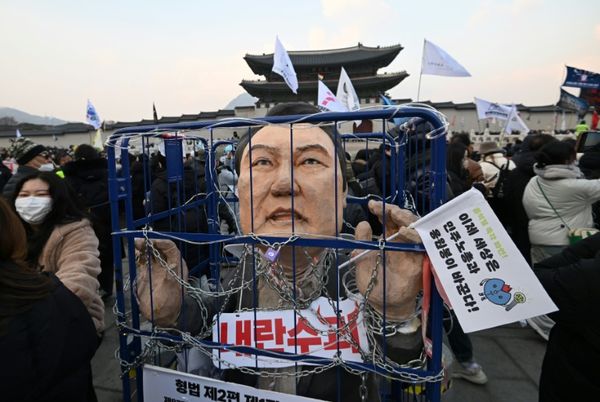Palantir Technologies has been a solid mover in 2024. And with an IBD Composite Rating of 99, let's position two option plays to consider in Palantir stock.
Both can be taken simultaneously. The first will be a short put spread to lean into the overall bullish structure of the chart. In the second trade, we will share a long call butterfly with a twist.
Palantir stock stands No. 1 overall within the enterprise software industry group, according to IBD Stock Checkup. So, it stands to reason that the chart is likely to show traders pressing ever higher, with new buyers coming into Palantir during the dips over the next quarter.
Earnings are scheduled for Nov. 4. So, we can wait to take this trade in Palantir stock after earnings. Or we could position before the results to potentially catch a move.
The key thing to watch? Simply your risk exposure.
Palantir Stock Action
The chart is extended in the near term. Plus, we approach what might be a fair bit of market volatility into the election cycle. My suspicion? Any dips get likely bought. But the breakout near the price point of 30 in Palantir stock is sharply lower than the current price near 44.
When we position with short spreads into earnings, we must consider our position size. Implied volatility within the option chains will spike into the Nov. 4 earnings news. If shocks come, we will get penalized. And if the release is very close to the options' expiration dates, we take on more risk. No significant movement in Palantir stock will result in the bull put spread losing much of its value. This benefits traders.
When we position with long butterflies into earnings, we must consider our position size. Butterflies carry great rewards but lower probabilities of success.
When shocks come, we are well rewarded. When the moves are undersized, we are not penalized heavily so long as our sizes are small. No significant movement will result in the butterfly losing much of its value. As I often say, we assume that we don't know the pure direction. But we can estimate the magnitude of the move using the ATR (average true range, as measured on the weekly chart) and the implied moves that market makers have priced into the move over the weeks and months ahead.
Trade Structure
The short put spread allows us to sell premium by selling an out-of-the-money put and buying another with a lower strike to protect or hedge any extraordinary price action. Set it up this way:
- Sell to open 1 PLTR Dec. 20-expiring 35 put
- Buy to open 1 PLTR Dec. 20 30 put
The short put spread above will deliver a credit of 81 cents, or $81 per share of a 100-shares contract, based on recent trading. This amount also serves as the maximum profit. Maximum loss for the position is calculated by subtracting the distance between the strikes and then the premium collected. That is, we get $35-$30 = $5 – 0.81= $4.19, or $419 per set of options.
You might ask, "Why would I take a position that has 4x on the losing side versus the profit?" The answer: This spread has a five-time likelihood of expiring worthless, thus giving the trader the overall edge if this trade is done many times over.
Long Call Butterfly
A long call butterfly is positioned so the 'long wing' of the trade gives us a likelihood of returns, while using the short wing to finance part of the trade.
This long call butterfly holds a single long call spread (a bullish position) and two short call spreads (a bearish position) that share the middle strike. Please notice the side that holds the short call spread is tighter so that the risk is bounded; there is no need for additional margin.
- Buy to open 1 PLTR Dec. 20 50 call
- Sell to open 3 PLTR Dec. 20 60 calls
- Buy to open 2 PLTR Dec. 20 65 calls
The call butterfly above will cost 86 cents per set of contracts, based on recent trading in Palantir stock. This makes $86 the maximum potential loss. It also means max gain comes out to $9.14, or $914 ($60 – $50 – $0.86 x 100) before commissions. Total profits will begin to erode if Palantir stock stays above 60.
Our maximum exposure is the cost of the butterfly, and it is also the max risk of the position. The break-even price stands at 50.86.
Stock hunting using fundamental and price strength within the IBD methodology is where I firmly plant myself under the backdrop of the current economic backdrop. I use technical analysis to find ideal buying opportunities in conjunction with the tools for strength seen on IBD.
Catch Anne-Marie Baiynd On The Oct. 25 IBD Live Episode
Understanding Long Butterfly Spreads
The goal of taking long butterflies like the one above is to take advantage of higher implied volatility as the undercurrent of markets shift to participate in an outsized move in either direction.
This trade could be placed both before and after earnings, though the movements may not be as amplified. Traders may try to push Palantir stock past 50 before it retraces near 35, a level of support.
As a side note, 45 serves as a resistance level, which occurred five months after its IPO at $7.25 a share on Sept. 30, 2020.
Palantir Stock: The Exit Strategy
Let's consider three choices to exit the trade. One, sell the butterfly in Palantir stock once it gets to an acceptable profit margin for you. I customarily look for 100%-300% profit in these setups. Two, sell the bull put spread once it gets to an acceptable profit margin for you, normally 50% for me. Three, sell the spreads once it hits your loss threshold as determined by personal risk. This will happen with extreme movement. I customarily look at about 65%. Depending on my size, I will choose 50%.
And finally, sell the entire position with both the bull put spreads and the butterfly spreads into the week before expiration, if all is going well and you have decided to hold the trade to closer to the end of expiration.
Final point: I have had many a trade go sideways taking it down to the wire and not capturing gains, so I do not advise this.
Anne-Marie Baiynd is a 20-year veteran trader of stocks, options and futures and is the author of "The Trading Book: A Complete Solution to Mastering Technical Systems and Trading Psychology." She holds no positions in the investments she writes about for IBD. You can find her on X at @AnneMarieTrades







